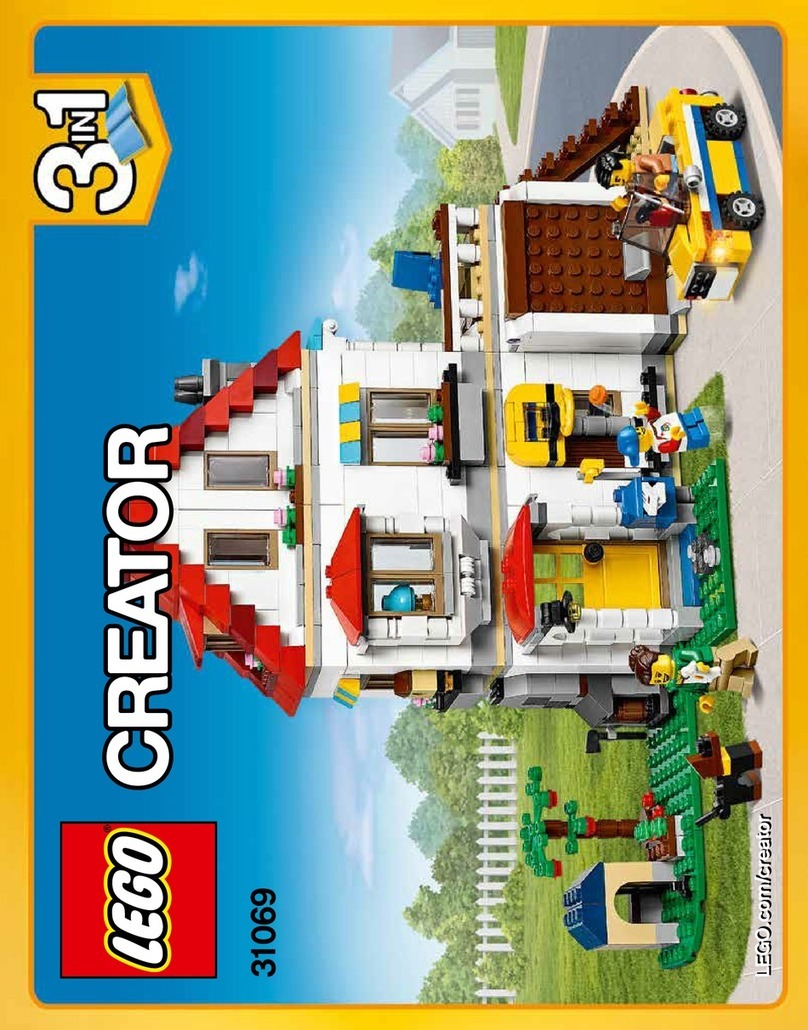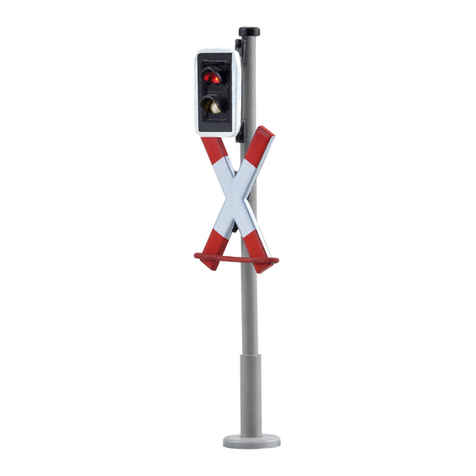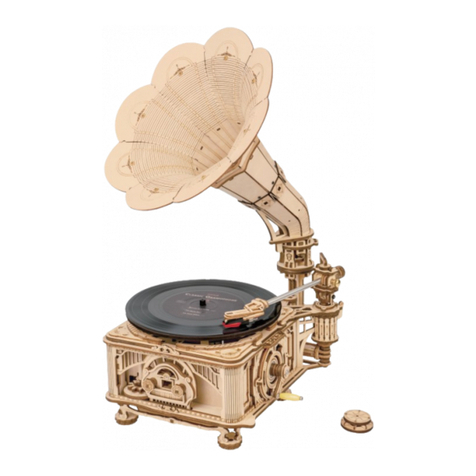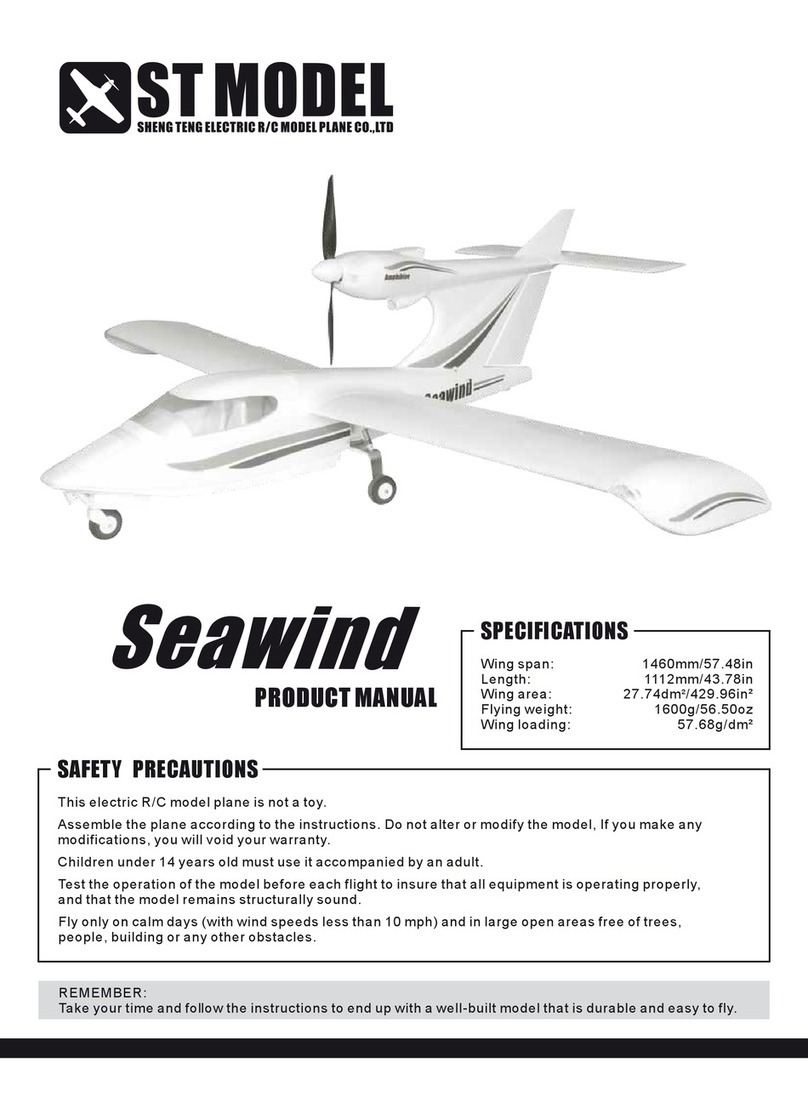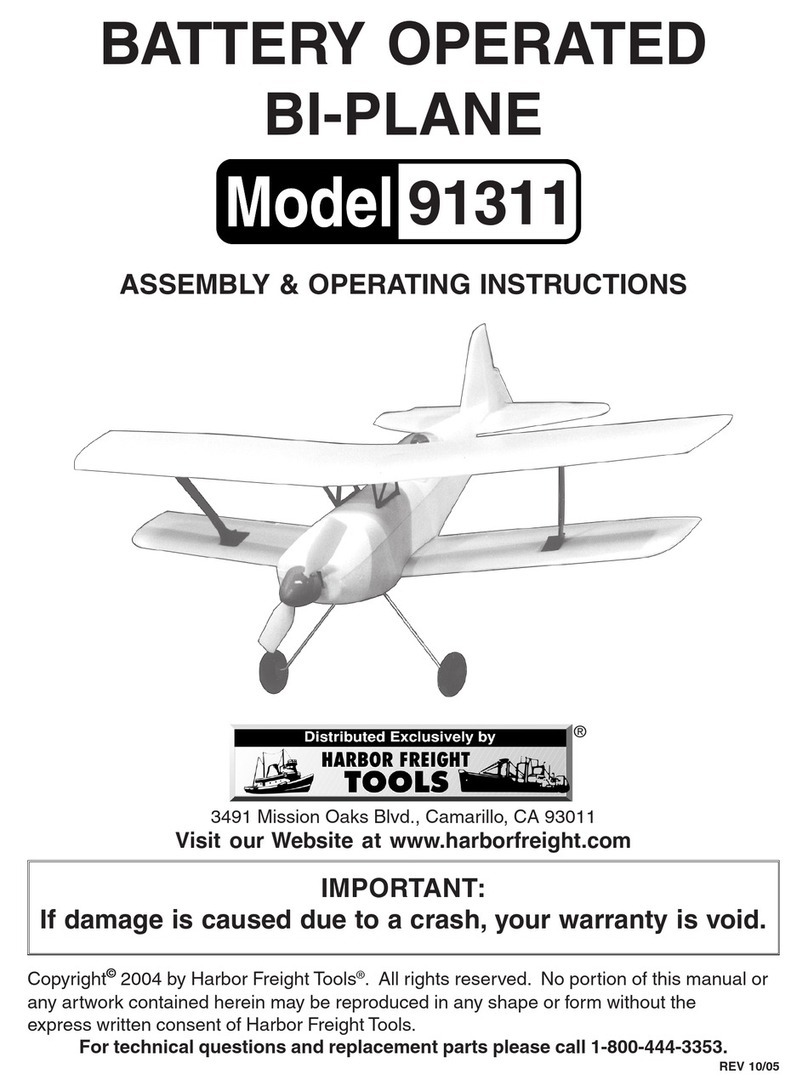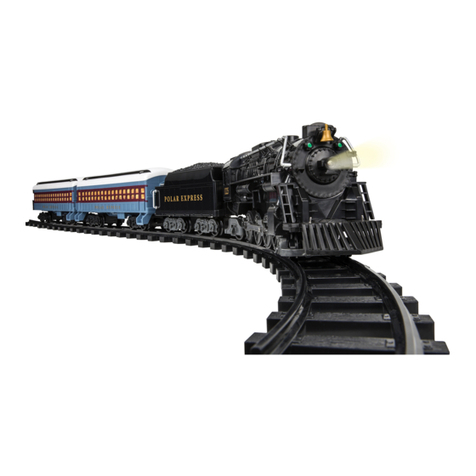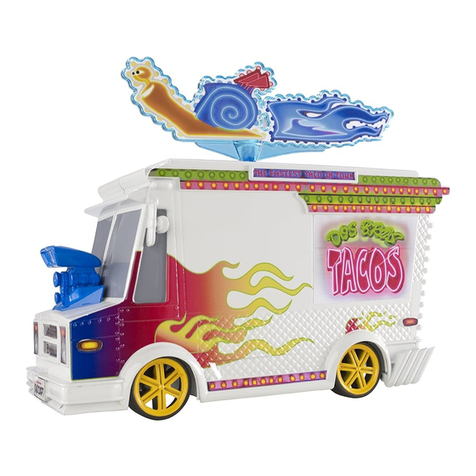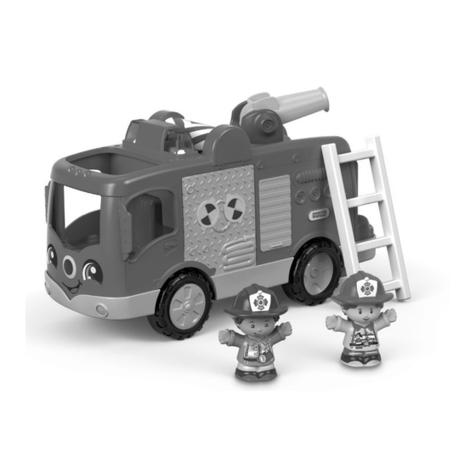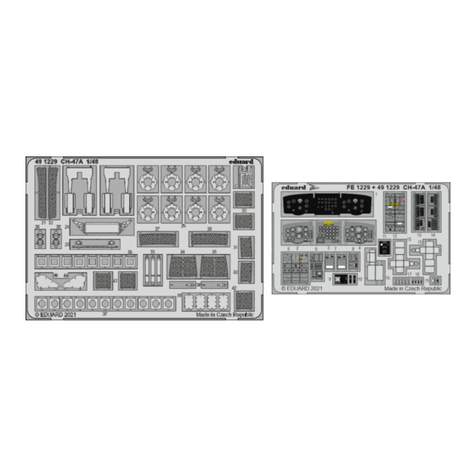CENTURY PRODUCTS Pro Master User manual

Pro
Pro M
Master & Ninja Pro
aster & Ninja Pro
Instruction Manual
Instruction Manual
SPECIFICATION
* MAIN ROTOR DIAMETER 49.10 in.
* TAIL ROTOR DIAMETER 9.37 in.
* OVERALL LENGTH 44.90 in.
* HEIGHT 15.23 in.
* GEAR RATIO 9.6 : 1 : 5.5
* ENGINE 32 ~ 46
* WEIGHT 5.8 LB
CENTURY HELICOPTER PRODUCTS
9 / 1995

Building Instructions for Ninja Pro
Building Instructions for Ninja Pro
Helicopter Kit
Helicopter Kit
Congratulations you have just purchased the finest 30-46 size RC helicopter model on the market. The Ninja
Pro and Pro Master series of helicopters feature cutting edge design along with state of the art materials used
throughout. Modern composite G-10 is used for the side frames for strength and to minimize vibration.An all
metal swashplate, metal washout and metal main rotor head are used to give precise control and handling
characteristics.Your Ninja Pro has been carefully researched and developed to give the highest performance
level achievable with present technology. We are constantly reevaluating our line of kits as technology ad-
vances in order to give you the highest degree of performance at all times. The instruction manual is divided
into twenty sections.. The parts bags have also been separated into eleven different numbered bags. The bags
should be opened in their numbered sequence with the exception of bag # eight as this is the hardware bag
and will be used in all steps.
Explanation:
* This instruction is written for 4 types of Ninja series, Ninja Pro 30,
Ninja Pro 46, Ninja Pro 30 Master and Ninja Pro 46 Master.
* Use locktite at the point where this mark is shown.
* Use oil at the point where this mark is shown.
* Special attention at the point where this mark is shown caution !
OPERATE YOUR NINJA PRO HELICOPTER SAFELY
Your new Ninja Pro helicopter is state of the are using proven design techniques and the best materials
available. This is done for two reasons, first to give you the highest quality helicopter available and second,
to insure it’s SAFE operation. It is imperative that the instructions be followed carefully during construction.
This will insure that your Ninja Pro is properly assembled and safe to operate. We are not responsible for
any damages or injuries caused by improper building, careless flying practices or the use of non-
factory parts.We can not stress the importance of using ONLY factory replacement parts for your Ninja Pro.
Every part in your Ninja Pro Kit has been thoroughly tested and made from the best materials.After market
parts may substandard and will compromise the safety of yourself and others at flying field. While flying,
always do so away from any obstacles. This includes trees, power lines, animals, people...... in the other
words, ANYTHING that can be hit if your model should go out of control. It is strongly recommended that
you NEVER go flying alone, a second person can warn you if anything comes into your flying area.
22
22
2

EDED
EDED
ED
33
33
3

Step 1 Lower side FrameAssembly
1. Attach the 90 degree aluminum angle support (2002-079 Bag #1) to the “inside” of the lower side frame. See
drawing below. Do this for the left and the right side. Each bracket is held on with three M3x8 cap head bolts and
Locknuts.
2.Attach two plastic battery tray mounts (2002-055 Bag #4) between the two lower side frames using four M3x8 self-
tapping screws. Install the battery tray plate (2002-113 Bag #1) using four M3x8 self-tapping screws. Please note that
there has been a change in the servo tray length. The mounts must be located at the very front and rear of the available
locations. Double check to make sure that the hole provided for the front cannot mount is on the proper side of the
battery tray.
3.Attach the two gyro plate cross members (2002-055) between the side frames using four M3x8 self-tapping screws.
Add gyro plate (2002-119 Bag #1) on top of the cross members with four M3x6 countersink screws.An optional gyro
location would be on the battery tray.This should only be considered if a center of gravity change is deemed necessary.
44
44
4

M3X10
103
147
149
151
099
M3X12
M3X10
147 MASTER
302
103 M3X10
097
096
101
M3X12
46 CUT THIS
AWAY
057
115
057
M3X8 Self
Tapping
M3X8 Self
Tapping
M3X6
098
101
bent here to fit
Step 2 Engine/Clutch Assembly
Slide the cooling fan (2002-115 Bag #1 for 30-size and 2002-097 Bag #2 for 46-size) onto the engine crankshaft. Then
slide the starter pulley (2002-149 Bag #4) on top of the fan. Add the engine nut and tighten it, but do not use any
Locktite. Install the centrifugal clutch (2002-147 Bag #4) to the pulley with two M3x10 bolts. Put the ball bearing
(2002-103 Bag #4) in the center of the clutch.
For 30-size engine: Install the engine to the engine mount (2002-099 bag #2) using four M3x12 bolts. Take the engine
assembly and slide it into the side frames from the top side. Use four M3x10 bolts and four washers to secure the
engine mount to the side frames. Do not tighten the four bolts completely. The position will be adjusted later. Drop
the fan shroud over the fan and between the lower frames. Use two M3x8 Philip head self-tapping screws to secure the
starter belt retaining clips (2002-057 bag #8) and the fan shroud to the side frames. The front end of the fan shroud is
secured by a M3x8 Philip head screw on each side of the frames. Now, hang the engine starting belt (2002-109 Bag
#4) around the fan shroud and secure in the starter belt retaining clips. It may be necessary to slightly squeeze the clips
in order to get a tight enough grip on the belt.
For 46-size engine: Install the engine to the engine mount (2002-101 Bag #2) using four M3x12 bolts. Take the
engine assembly and slide it into the side frames from the top side. Use six M3x12 bolts and six washers to secure the
engine mount to the side frames. Do not tighten the four bolts completely. The position will be adjusted later. The fan
shroud for the 46-size engine is different from the 30-size. The 46-size shroud (2002-107 bag #2) comes in two pieces.
Screw the two pieces together using two M3x8 Philip self-tapping screws. Add the fan bracket (2002-098 Bag #2 )
between the rear of the fan shroud and the engine mount and adjust the fan to proper height. The bottom of the fan
should be flush with the bottom of the shroud. Add the two starting belt retainer clips (2002-057 Bag #8) on the fan
shroud using two M3x8 Phillips screws and two washers. Now hang the engine starting belt (2002-109 Bag #4)
around the fan shroud and secure the belt in the clips.
The Pro Master has the addition of a top start system. This system is assembled and installed as a complete unit.! Do
not use anyABC engine for shaft start system. Start by sanding the inside of the clutch bell (2002-303 BAG #4M) with
220 grit sandpaper to aid the bond when installing the clutch lining. Thoroughly clean with solvent. Trim the liner so
it fits snugly in the bell. Remove and reinstall using JB weld epoxy or slow CA to hold the liner in place. Press the
4x9x4 ball bearing (2002-103 BAG #4M) into the inside of the clutch bell. Lightly grease the start shaft (2002-306
BAG #4M) and insert into the clutch bell from the bottom. Take the double bearing block (2002-307 BAG #4M) and
slip over the pinion shaft. It is advisable to use a little Locktite on the pinion shaft where it makes contact with the ball
bearing. Clean off the end of the start shaft and slide the one way start adapter (2002-304 Bag #4M) in place. Install the
set-screws that hold the adapter in place. Take note that one of the set-screws must seat on the flat on the start shaft and
Locktite must be used. 55
55
5

Step 3 Installing the Rate Gyro
Use two layers of 1/8 inch thick double-sided foam tape to install the electronic rate gyro to the gyro mounting plate.
The double sided tape can be found at your local hobby shop or at hardware stores. Use the same procedure if you
intend to mount the gyro on the battery tray.
Step 4 Landing Gear
Attach the two landing gear struts (2002-067 Bag #1) onto the lower frames using four M3x16 bolts 3mm Lock-nuts
and washers. Slide the landing skids into the landing gear struts. Install four M3x6 set screws to the struts to prevent
the skids from moving. It is advisable to pre-thread the struts by running a M3x8 screw into them before installing the
skids.
Step 5 Collective and Cyclic Control
Now put the lower side frame assembly aside. We will start on the upper side frame assembly now.
Fit the elevator axle (2002-153 and 2002-155 Bag #3) to the elevator lever (2002-069 Bag #3). Use a M3x5 bolt and
a small washer to hold each axle; use a drop of Locktite on the M3x5 bolt. Use two steel ball end (2002-229 Bag #3)
and locktite to hold the steel balls in place. Install a plastic bushing (2002-072 Bag #3) onto each of the two collective
pitch levers (2002-071 Bag #3). The 2002-072 bushings can be replaced by optional ball bearings 2002-070. The
plastic bushing flange must rest against the face of the pitch lever. If not, it will be necessary to slightly bevel the edge
of the hole in the lever. Please note that all the plastic bushings should rotate freely on their mating shafts. If not than
the bushings should be reamed out slightly until they do. This can easily be done by rolling some 400 grit wet or dry
sandpaper and working it in and then out of the bushing until the proper fit is achieved.
109
M3X8 S/T M3X16
M3NUT
3X6 SET
SCREW
3X6 SET
SCREW
068
066
067
M3X10(30)M3X10(30)
M3X10(30)M3X10(30)
M3X10(30)
M3X12(46)M3X12(46)
M3X12(46)M3X12(46)
M3X12(46)
M3X8 S/TM3X8 S/T
M3X8 S/TM3X8 S/T
M3X8 S/T
M3X8 S/T
105
155
069
072
(070 BALL
BEARING
OPTION)
229
071
229
WASHER(S)
M3X5
WASHER(S)
153
071 071
229
229
155
153
069
66
66
6

Step 6 Upper Main FramesAssembly
Fit the elevator control lever set and collective control axle (2002-157 Bag #3)between the top left and top right side
frames (2002-117 Bag #1). Press a plastic flanged bearing (2002-059 Bag #3) for the collective control lever axle into
inside of each side frame.The shorter elevator axle should be on the left side of the helicopter. Install two main bearing
blocks (2002-083 Bag #4 or Bag #4M) onto the top side frames using four M3x35 bolts and four 3 mm nuts. The top
bearing block should have the ball bearing facing up. The bottom bearing block should have the ball bearing facing
downward. After insert the collective control lever axle into the flanged bearing. Add the collective lever (2002-071
Bag #3) to the collective axle. The lever needs to slide onto the elevator axle (2002-153 and 2002-155 Bag #3) with
the flange bearing facing toward the elevator lever. Please see the drawing.
The 2002-059 bushings can be replaced by optional ball bearings (2002-061). Please note once again that these
bushings or ball bearings must move freely and with minimal freeplay in order for your helicopter to operate properly.
It is imperative that the retaining screws be set at the proper tension. Too tight will bind the bearing and too loose will
create unwanted freeplay. Fit the plastic tail boom holders (2002-085 Bag #4 or Bag #4M) in-between the upper side
frames. Also add the tail rotor servo mount plate (2002-073) outside the left side frame. The tail boom holders and
servo mount are held by four M3x35 bolts and four nuts. Do not tighten the four nuts and bolts completely. They will
tightened later, after the tail boom is installed.
Take the Y- shaped push-pull collective lever and install the 5mm control balls (2002-239 Bag #8) using M2x10
screws and 2mm nuts. Now add the lever (2002-075 Bag #1) on top of the right side aluminum arm (2002-071 Bag
#3). Use a M3x8 bolt and washer to secure theY-shaped lever at the collective axle, and a M3x6 bolt to secure theY-
shaped lever to the 2002-071 arm. Install two M3x6 flanged plastic bushings (2002-160 Bag #3) The 2002-160 bush-
ings can be replace by optional ball bearing 2002-022 on each 90 degree bell crank (2002-159 Bag #3). Install two
steel balls onto each bell crank using two M2x8 bolts, take care not to have any excess bolt protruding the opposite
side of the bell cranks. There are two 90 degree bell cranks, do this for both left and right side bell cranks. Slide a 90
degree bell crank onto the left side elevator axle (2002-155 Bag #3) Use a M3x10 bolt and Locktite to retain the bell
crank onto the elevator control axle. Do not overtighten this M3x10 bolt; the bell crank should be able to pivot freely,
but there should not be any free play.
125
125
083
083
157
155
153
M3X8 WASHER(S)
M3X8
WASHER(S)
M3X35
071
071
117
117 WASHER(S)
M3X8
071
117
059
061 (OPTION
BALL BEARING)
059
059
2X10
075
M2 NUT
M2 NUT
M3X6
M3X8
WASHER(S)
239
239
071
77
77
7

Now, install a similar 90 degree bell crank to the right side. Install the steel elevator bell crank (2002-161 Bag #3) on
the right side elevator axle (2002-153 Bag #3). We suggest that you file a flat on the elevator axle where the set screw
makes contact. Put a 3x3mm set screw in the steel bell crank. Do not tighten the set screw very tightly yet, because the
exact angle will be adjusted later. When permanently tightened be sure to use a drop of locktite on the elevator bell
crank. Fit the swashplate anti rotation bracket (2002-077 Bag #3) between the upper side frames. Fit two M3x35 bolts
through the frames and the bracket. Secure them with two M3 nuts. Do not overtighten as this will only distort the
frames.
Clutch Bell Assembly
Roughen the inner surface of the clutch bell (2002-127 Bag #4 or #4M) with #220
grit sand paper. Then, clean off the debris. Trial fit the clutch lining (2002-129
Bag #4 or #4M) to the clutch bell, make sure it fits snugly. Once you are
satisfied, then remove the lining and permanently glue it back in using JB weld
Epoxy, or slow CA glue. Fit the clutch bearing (2002-131 Bag #4 or 4M) and
block (2002-081 Bag #4 or #4M) in-between the upper side frames. The ball
bearing should face downward. Use two M3x35 bolts to secure the bearing block
in place. Insert the clutch bell in the clutch bearing. It is recommended to apply
a little locktite to the pinion shaft where it inserts into the bearing.
The Pro Master has the addition of a top start system. This system is assembled
and installed as a complete unit. Start by sanding the inside of the clutch bell
(2002-303 Bag #4M) with 220 grit sandpaper to aid the bond when installing the
clutch lining. Thoroughly clean with solvent. Trim the liner so it fits snugly in the
bell. Remove and reinstall using JB weld epoxy or slow CA to hold the liner in
place. Press the 4x9x4 ball bearing (2002-103 Bag #4M) into the inside of the
clutch bell. Lightly grease the start shaft (2002-306 Bag #4M) and insert into the
clutch bell from the bottom. Take the double bearing block with ball bearing
(2002-307 bag #4M) and slip over the pinion shaft. It is advisable to use a little
Locktite on the pinion shaft where it makes contact with the ball bearing. Clean
off the end of the start shaft and slide the adapter (2002-304 Bag #4M) in place.
Install the set screws that hold the adapter in place. Take note that one of the set
screws must seat on the flat on the start shaft and Locktite must be used. Slide the
assembly into place and secure the bearing block to the frames with two M3x35
screws and nuts. Take note that the heads of these bolts must be on the same side
as theY shaped collective bell crank.
085077
M3 NUT
M3
NUT
M3X35
M3X35
073
M3X10
WASHER(S)
022 BALLBALL
BALLBALL
BALL
BEARINGBEARING
BEARINGBEARING
BEARING
OPTIONOPTION
OPTIONOPTION
OPTION
239
2X8
161
M3X6
SET SCREWSET SCREW
SET SCREWSET SCREW
SET SCREW
159
160
160
159
2X8
239
304
OPTION
309
305
OPTIONOPTION
OPTIONOPTION
OPTION
3X6 SET
308
103
301
131
307
303
103
306
302
129
127
ROUGHEN INNER
SURFACE
JB WELD EPOXY
OR SLOW CA GLUE
JB
88
88
8

Step 7 Tail Rotor Drive
Insert the steel pinion shaft (2002-087 Bag #4 or #4M) into two bearing blocks (2002-081 Bag #4 or #4M). The ball
bearings should face upward for both bearing blocks. Carefully smear a small amount of slow CA glue around bearing
(2002-131 Bag #4 or 4M) before pushing bearing into bearing block (2002-081 Bag #4 or #4M). Add the plastic
pulley (2002-133 Bag #4 or #4M) onto the pinion shaft. Insert a M3x8 bolt and a washer on top of the plastic pulley.
Now fit this pulley assembly in-between the upper side frames. Use three M3x35 bolts and three locknuts to secure it
to the frames. Fit a 40 mm long 3 mm stud (2002-094 Bag #3) into the rear hole of the bottom bearing block. Add a
threaded spacer (2002-091 Bag #3) on each side of the 3 mm stud. Leave this assembly slightly loose so you can adjust
the gear mesh later.
M3x35
WASHER(S)
131
081
127
M3 NUT
M3x35
WASHER(S)
M3 NUT
303
306
307
3X6 SET
308
WASHER(S)
M3X8
133
131
081
131
087
094
081 094
091
091
M3 NUTS
M3X35
M3X35
M3X35
133
PRO MASTERPRO MASTER
PRO MASTERPRO MASTER
PRO MASTER
CLUTCHCLUTCH
CLUTCHCLUTCH
CLUTCH
NINJA PRONINJA PRO
NINJA PRONINJA PRO
NINJA PRO
CLUTCHCLUTCH
CLUTCHCLUTCH
CLUTCH
99
99
9

Step 8 Mating The Upper and Lower Main Frames
Find the four 26 mm long threaded aluminum spacers (2002-093 Bag #3). Fit them in-between the upper side frames
in the locations shown in the drawing.
Mate the upper frame assembly onto the lower frame assembly. Fit the clutch bell onto the clutch first. Add eight 14
mm long aluminum spacers (2002-089 Bag #3) in-between the upper and lower side frames. See drawing for their
locations. Use eight M3x25 bolts to go through these eight spacers. Then add two M3x8 bolts to the two spacers that
are on the pulley bearing block. Use blue Locktite on these bolts.
NinjaPro don’t forget the engine starting belt (2002-109 Bag #4) Or if building a Pro Master don’t forget to grease the
uniball at the base of the start shaft.
093
089
091
089
093
089 093
089
093
089
093
089
089
109
M3X25 M3X25
M3X25
M3X25
M3X25
M3X25
M3X25
M3X25
M3X8
M3X8
1010
1010
10

Step 9 Main Rotor Head
Insert the metal center hub (2002-003 Bag #5) into the metal center yoke (2002-001 Bag #5). Add a M3x8 bolt on
each side of the yoke. Use blue Locktite on the two bolts. (2002-001, 2002-003) Smear some Vaseline on the two
rubber dampers (2002-011 Bag #5). Then insert one damper on each side of the yoke. Slide the feathering spindle
(2002-005 Bag #5) through the rubber damper and the yoke.
Find the two blade grips (2002-007 Bag #5) note that the four main blade bearings (2002-008 Bag #5) are pre-
installed in the blade grip. Add the metal pitch control arm (2002-009 Bag #5) onto the blade grip using a single M3x6
bolt. Add the steel pitch control ball stud (2002-231 Bag#1) to the pitch control arm (2002-009 Bag #5). Use Locktite
on the pitch are and pivot control ball.
Slide the completed blade grip onto the feathering spindle (2002-005 Bag #5). Insert a M3.5x12 bolt and a washer
through the blade grip to secure the hub to the spindle. Use Locktite on this bolt !Do not over tighten as this will only
mushroom the shaft and make bearing removal difficult.
Slide the seesaw (2002-017 Bag #5) onto the center hub. Fit two flanged plastic bearings (2002-160 Bag #3) or the
flanged ball bearings (2002-022 OP) if you are building a Ninja pro master , into the center hole of the seesaw. Secure
the seesaw to the hub by using a M3x6 bolt through each flanged bearing. Tighten the two M3x8 bolts sufficiently to
remove all free play, but the seesaw should still be able to move smoothly ! Use Locktite on the bolts. On this and the
following steps it cannot be stressed enough the importance of the seesaw and mixing arms pivoting freely without
excessive play. The use of Locktite is mandatory during these steps.
Fit two flanged plastic bearings (2002-160) or non-flanged ball bearings (2002-022A Bag #4M) if building a Pro
Master onto each mixing arm (2002-019 Bag #5). Add the two mixing arms (2002-019) onto the seesaw. Use a
M3x10 bolt with Locktite to secure the mixing arm to the seesaw. Tighten the M3x10 bolts sufficiently to remove all
free play, but the arms should still be able to move smoothly. Fit steel ball (2002-239) onto mixing arm (2002-019) use
M2x8 screw with nut and Locktite.
Insert two plastic flanged bearing (2002-160) or (2002-022A) if building a Pro Master on the seesaw. Slide the flybar
(2002-015 Bag #10) through the flanged bearings and the seesaw ! Use a ruler to check to make sure equal length
sticks out on either side of the seesaw. Add a flybar control arm (2002-013 Bag #5) on either side of the seesaw. Coat
the threads of each M3x6 set screw with Locktite, then fit a set screw inside each control arm. Make sure both arms are
level ! Insert a 3mm locknut into the underside of each control paddle (2002-253 Bag #5) Then screw the paddles
onto the flybar. Wick some thin CA glue into the paddle hole after threading it onto the flybar ! Make sure the two
paddles are at same distance from the control arm and are level with the control arms. This is an extremely important
step you can follow the picture to cut a flybar jig template. Check the flybar balance by letting the seesaw pivot on its
bushings. Add tape to the light paddle until balance is achieved.
M3x8
M3x8
003
011
005
005 231
007A
008
007 008
009
043
001
3.5X12
WASHER(S)
M3 NUT
M3X25
M3X6
CN2135 HEAD BUTTON (PURPLE)OPTION
CN2136 HEAD BUTTON (GOLD)OPTION
CN2122 CARBON
STIFFENER FOR
FLY BARS
(OPTION)
M3 NUT
1111
1111
11

121
021
023
023
025
032
031
229
229
229
226 226
160
160
022A
230
230 022A
PRO MASTER
4X4 SET4X4 SET
4X4 SET4X4 SET
4X4 SET
SCREWSCREW
SCREWSCREW
SCREW
M3X10 M2X12M2X12
M2X12M2X12
M2X12
239
M2 NUTM2 NUT
M2 NUTM2 NUT
M2 NUT
M3X3M3X3
M3X3M3X3
M3X3
SETSET
SETSET
SET
M3X16
013
013
160
230
015
253
019
160
160
M3x6 160
M3X10
230
017
230 M3X3
239
M2
NUT
MASTER
USE 022
HERE
M2X8
MASTER
USE 022A
HERE
CN2029A
FLY BAR
WEIGHTS
(OPTION)
CUT A FLY BAR JIG TEMPLATE
SOME THIN
CA GLUE MAKE SURE
PADDLES & ARM
ARE LEVEL
The Pro Master has all of these plastic bearings replaced with ball bearings. The installation is the same except that
some small micro washers 3x4.5x0.5T are used in-between the ball bearing and the part it mates against.
Step 10 Washout and Swashplate
Find the metal washout mixing base (2002-021 Bag #6) and the two metal washout arms (2002-023 Bag #6). Insert a
plastic flanged bearing (2002-160) Or 2002-160 ball bearing if building a Pro Master onto either side of the washout
arm. Attach the washout arm to the mixing base with a M3x10 bolt. Tighten the M3x10 bolts sufficiently to remove
all free play, but the arms should still be able to move smoothly.
Put a plastic radius link (2002-025 Bag #5)
on each washout arm. Slide a 2 mm pin through
the radius link and the washout arm to
secure them. Insert a 3 mm set screw
in the washout arm. This set screw is
used to secure the pin. Add a metal
spacer and steel ball and a M2x10
bolt on each washout arm. Secure the
M2x10 bolt with a 2 mm nut
(2002-239 Bag #8).
Fit three short threaded steel balls
(2002-229 Bag #3) onto three outside
arms on the swashplate ! Use Locktite
on all these threaded balls. Be careful
not to scratch or overtighten the balls.
They are easily damaged during
installation. For the swashplate
antirotation arm (2002-032 Bag #6)
fit a M3x16 bolt with the plastic sleeve,
a brass spacer, and special threaded
steel ball and another brass spacer;
see drawing ! Use Locktite on the bolt.
Fit four long threaded steel balls
(2002-226 Bag #5) onto the four holes
on the inside swashplate ring. See
drawing below. Use Locktite on all
these threaded balls. 1212
1212
12

Step 11 Main Gear and Main Shaft
Slide the aluminum main shaft stopper (2002-123 Bag #6)
onto the main shaft from the bottom. Hold the plastic
main gear (2002-135 Bag #6) underneath the main rotor
shaft bearing block. Slide the main rotor shaft (2002-121
Bag #6) from the top through the bearing blocks and into
the main gear. Install a M3x20 bolt through the main
gear auto rotation hub and through the main shaft and
secure with a 3mm Lock-nut. Note that the end of the
shaft with the most distance between the hole and the
end is the top end of the shaft. Insert two 3x3 mm set
screws into the mast stopper (2002-123) and tighten
them. Make sure the main shaft has nofreeplay up or
down.
Slide the swashplate and the washout assembly onto
the main rotor shaft. Snap the two radius links
(2002-025 Bag #6) onto the inner swashplate
long steel balls (2002-226) 180 degrees from one
another. Add the washout retaining block (gold part
with two steel pins) with the pins pointing downward.
Temporarily use a 4x4mm set screw to secure this part
to the main shaft. Then, add the main rotor head on the
shaft. Insert a M3x20 bolt and locknut through the
main rotor hub and shaft, and tighten it.
Step 12 Tail Rotor System
Tail Rotor Gearbox
Install the right side plate (2002-185 Bag #7)
onto the gearbox housing (2002-187 Bag #7)
with two M3x6 bolts.
Fit the tail rotor drive
shaft (2002-193 Bag #7)
and a thin (2002-187 Bag #7)
spacer to the right tail plate.
Now fit the tail rotor drive
belt through the hole in
the tail rotor gearbox
housing (2002-187),
then loop the tail rotor
drive belt (timing belt)
(2002-183 Bag #4 or 4M)
around the tail pulley (2002-193).
Add the left side tail plate to the tail
gearbox housing using two M3x6 bolts.
Fit guide pulley (2002-189 Bag #7) and two
thick (2002-187 Bag #7) spacers between the
side plates. Use a M3x25 bolt through the side
plates and through the guide pulley to hold it in
place ! It is extremely important to use Locktite
to all screws that thread into a tapped hole in this step.
135
136
M3X20
M3 NUT
123
3X3
SET
187
187
187
M3X25
M3X6
M3X6
187
197
185
189
M3X6
M3X6
183
M3X6 M3
NUT
187
185
185
M3X10
191
M2 NUT
M2x10 230
M4X6
M4X10
1313
1313
13

Tail Rotor Blade Grip
Sliding Tail Rotor Pitch Control Mechanism
Slide a ball bearing (2002-209 Bag #7) onto the
tail hub (2002-199 Bag #7) followed by a
spacer (2002-211 Bag #7) then
another bearing. Secure the
bearings and spacer to the
hub with a small washer
and a 3mm lock-nut. Repeat
for the next side. Fit the tail blade
grips (2002-207 Bag #7) to the bearings
with four M2x10 screws and nuts !Note
that one of the grip halves has a nub for the
pivot ball to be mounted to the grip. Repeat for the
next side. Attach a pivot ball on each assembly with
a M2x10 screw and nut.
Install a ball bearing (2002-204 Bag #7) on either
side of the tail pitch plate housing
(2002-205 Bag #7). Insert the tail
pitch plate inner sleeve (2002-203
Bag #7) into the tail pitch plate
housing. Note that the pivot pin is
offset and the brass slider must be
inserted into the side with less distance
between the pin and housing edge. .
Attach the tail pitch plate (2002-201 Bag #7)
to the brass tail pitch slider. Press the locking
ring onto the brass pitch slider to hold the pitch
control plate in place. It is advisable to add some
JB Weld epoxy to the locking ring for some added security.Add two small plastic ball links (2002-235 Bag #8) on the
tail pitch control plate. Secure them with (2002-202Bag#7) special screw and pin, slide the entire assembly onto the
tail rotor shaft. Attach the tail pitch lever (2002-191 Bag #7) to the tail rotor gear box with a M3x10 bolt two micro
shims (2002-230 Bag #5) and a lock nut.The steel pin on the tail rotor control housing (2002-205 Bag #7) fits into the
steel ball pressed into the end of the bell crank.
Fit the tail rotor hub (2002-199 Bag #7)) with the tail grip onto the tail rotor shaft (2002-193 Bag #7). Put two 3x3mm
set screws in the tail rotor hub, and use them to secure the hub to the shaft. Use Locktite on these set screws.
Fit the tail rotor blades to the blade holders with a 3mm washer on each side of the blade. Secure each blade with a
M3x16 bold and a 3mm nut.
NOTE: make sure the tail blades are facing the proper direction
Step 13 Tail Fins
Put the two half pieces of plastic fin mount (2002-085 Bag #4 or 4M)) on the tail boom (2002-173 Bag #10). Put the
horizontal fin (2002-175 Bag #1)) on top of them Insert two M3x35 bolts through the fin and the plastic mounts. Add
the two tail boom support rods (2002-179 Bag #10) under the plastic mount (2002-085 Bag #4 or 4M). Use two M3
lock nuts to secure all of them, but do not tighten them completely, yet. We will tighten them later.
Slide three tail pushrod guides (2002-171 Bag #4 or 4M) onto the tail boom: two are in front of the horizontal fin, and
one is behind the horizontal fin.
Fit the two plastic mounts (2002-085 Bag #4 or 4M) for the vertical fin (2002-177 Bag #1) on the tail boom. Add the
vertical fin. Insert two M3x35 bolts through the fin and the plastic mounts. Secure them with two 3 mm locknuts.
193
203
204
204
205
203
235
235
201
202
202
203
205
204
204
228
M3X3
SET
M3
NUT
M3X16
M2 NUT
M2X10
207
209
209
211
199
M3
NUT
201
JB WELD
HERE
1414
1414
14

Step 13 Tail Fins
Step 14 Mating Tail Boom to the Main Frames
Feed the tail drive belt (2002-183 Bag #4) through the tail boom starting with the end with two holes. A piece of wire
with a hook bent into it works well for pulling the belt through. Fit the tail boom (2002-173 BAG #10) into the upper
side frames. Loop the drive belt onto the front pulley. The belt should have a 90 degree turn inside the tail boom !
Check to make sure when the main rotor is turning in the clockwise direction (viewed from the top), the tail rotor
should turn counter-clockwise when viewed from the right hand side. Adjust the belt tension by pulling on the tail
boom. Do not over tighten the belt, it should not be too loose so the belt slips. Slowly, tighten the four M3x35 bolts
that hold the tail boom.
Attach the front of the tail boom support rods to the lower main frames. Use two M3x8 bolts and a 57mm threaded
cross member (2002-095 Bag #3) to secure the front of the tail boom support rods to the frames. Mount the aft end of
the boom-struts to the horizontal fin mounts, making sure the horizontal fin is level tighten the two M3x35 bolts
holding the horizontal fin and fin clamp together.
Step 15 Fuel Tank
Assemble the fuel tank (2002-063 Bag #9) carefully according
to the drawing shown below. Use caution while bending the
brass tubing. Do not use any pliers as this will kink the
tubing use your hand and make a smooth flowing bend
to avoid kinking. Add one strip of double sided foam
tape to the top surface of the tank so it will make
contact with the gyro plate mount. Slide the tank
into the side frames from the right hand side.
The fuel line should come out of the right
hand side of the helicopter.
M3x35
175
085
085
085
085
179
177
171
171
223
M3X35
173
M3 NUT
171
M3 NUT
RIGHT !
WRONG !
(TOO TIGHT)
179
063
095
M3X10
Double sided
foam tape
215
173
171
From muffler
pressure fitting
To engine carbure-
tor
1515
1515
15

Step 16 Main Rotor Blades
The rotor blades that are included in your Ninja Pro kit come
pre-finished and require no building. They however
should be checked for balance before use. If you have
a balancer follow the instructions that came with
the balancer. Next attach the blades to the rotor
head. Balance the Rotor head and blades on two
drinking glasses suspending the whole unit by the
flybar. The heavy side will hang lower than the light
side. Add self-adhesive tape on the light blade on a
location that will result in the proper CG shift. Add
the tape until the rotor head hangs horizontally.
Step 17 Radio Installation
All five servos are mounted with the screws that came with your radio system with the exception of the aft two
screws that hold the elevator servo. These two are replaced by two M3x8 self tapping screws. They are screwed
trough the cutouts in the frame and into the plastic servo mounting plates (2002-169 BAG #3) located with the
plastic parts tree. Mount the five servos as illustrated in the instructions.
Step 18 Making Up the Control Push rods
Make up all the control push rods according to the specified length shown in the drawing. Please note that these
dimensions are from end to end of the plastic rod-end and are only guidelines.You will have to fine adjust them
according to your particular servos.
#2002-213 ELEVATOR: Total 91 mm for JR servos ( 2 )
(Use 68mm rod,see FIG #7 ) Total 92 mm for Futaba servos (2)
#2002-217 COLLECTIVE: Total 117 mm for JR servos (2)
(Use 80mm rod,see FIG #2) Total 118 mm for Futaba servos (2)
#2002-215 ROLL(AILERON): Total131 mm for JR servos (2)
(Use 100mm rod,see FIG #1 Total 132 mm for Futaba servos (2)
& FIG #3 Slightly bent 10 degree)
#2002-221 SWASHPLATE: Total 69mm (4)
(Use 40mm rod, seeFIG #3A & FIG#3B)
#2002-221 PITCH ( long ): Total 66mm ( 2 )
(Use 40 mm rod, see FIG #4 )
#2002-225 PITCH ( short ): Total 36mm ( 2 )
(Use10mm rod, see FIG #4 )
#2002-219 FLYBAR: Total 47mm (2 )
(Use 25mm rod See FIG #5)
#2002-221 THROTTLE: Total 80 mm (1 )
(Use 40 mm rod, see FIG #6)
# 2002-215 / 223 RUDDER: Total 618mm (1 )
(Use 100 & 476 mm rod, see FIG #8)
EXSAMPLE:
2002-217
TOTAL 117mm(JR)
USE 80mm ROD
SEE FIG.# 2 117MM
80MM
CUT THIS
WHITE SHRINK
COVER OFF
THEN USE THIN
CA GLUE HERE
1616
1616
16

Use this pitch gauge
1. Cut a 1:1 pitch gauge
2. Put the gauge into the blade holder of the rotor head.
3. Makesure the flybar parallel to the tail boom.
4. Referring to the table bellow, set the flybar to each pitch
gauge line, and read the pitch.
5. Adjust your transmitter referring to the data of next page.
Use this flybar jig template
1. Cut two 1:1 template.
2. Referring step 9 main rotor head to
setup.
CUT A FLY BAR JIG TEMPLATE
Add tape on the
lighter blade
Accuratech main blade balancer
with C.G checker (Option) # CN2052
can help you to find out the position
of C.G and balance a pair of the main
rotor blade.
1717
1717
17

213
213
165
163
229
233 166
ELEVATOR
SERVO
ELEVATORELEVATOR
ELEVATORELEVATOR
ELEVATOR
LINKAGELINKAGE
LINKAGELINKAGE
LINKAGE
COLLECTIVE LINKAGECOLLECTIVE LINKAGE
COLLECTIVE LINKAGECOLLECTIVE LINKAGE
COLLECTIVE LINKAGE
217
217
169
215
215
111
053
051
169
215
ROLL(AILERON)ROLL(AILERON)
ROLL(AILERON)ROLL(AILERON)
ROLL(AILERON)
THROTTLE(ENGINE)THROTTLE(ENGINE)
THROTTLE(ENGINE)THROTTLE(ENGINE)
THROTTLE(ENGINE)
221
RUDDER LINKAGERUDDER LINKAGE
RUDDER LINKAGERUDDER LINKAGE
RUDDER LINKAGE
215 170 223
169
1818
1818
18

FIG.1FIG.1
FIG.1FIG.1
FIG.1
FIG.1FIG.1
FIG.1FIG.1
FIG.1
215
FIG.2FIG.2
FIG.2FIG.2
FIG.2
16-18mm
221 221
FIG.3BFIG.3B
FIG.3BFIG.3B
FIG.3B
217
217
FIG.2FIG.2
FIG.2FIG.2
FIG.2
FIG.3AFIG.3A
FIG.3AFIG.3A
FIG.3A
221
221
217
217
213
213
215
80
100
Step 19 Setup
All of the push rods now need to be fine adjusted to
the proper length. First adjust the roll push rods
(2002-215 Bag #8) so that the top edge of the bell
cranks are 80 degrees with the roll servo in the
neutral position( Figure1 ). Now adjust the
collective rods (2002-217 Bag #8) so that the
pitch arms are in the center of the slot within
the main frame at collective half stick. When
installing the control balls on the collective servo
space the balls 6mm-8mm from the center of the
servo wheel if using a standard radio. If using a
computer radio space the balls 8mm from the
center of the output wheel. This will insure that
you don't have too much collective travel.( FIGURE 2 ).
With this done four swashplate rods
( 2002-221Bag#8) so that the swashplate
will be16-18mm above the upper
bearing block ( Figure 3A/3B ).
1919
1919
19

Adjust the pitch control rod
(2002-221 & 2002-225) as
needed to achieve 4-5
degrees pitch ! ( Figure 4 )
you need slightly bend
#2002-221 to clear mixing
arm too. Now using the high
and low pitch trimmers on
your transmitter set the low
pitch to -1 degree and the
high to +8 degrees !
(see your radio instruction
manual). Adjust the flybar
control rods (2002-219 Bag #8)
so that at half collective stick the
washout control arms will be level ( Figure 5 ).
Now lets move on to the throttle.Adjust the throttle rod
(2002-221 ) and the servo arm so that at full low throttle
and trim the carburetor will be completely closed,You
can using throttle trim to set up idle speed.
At half stick the carburetor should be open exactly 50%
and at full stick the carburetor will be open to 100%.
If you do not get to 100% open than your servo arm
is too short and must be lengthened ( Figure 6 ).
Adjust the elevator lever so that it is 3 degrees
forward with the swashplate level ( Figure 7 ).
The two elevator push rods ( 2002-213 Bag #8)
must be the same length with the servo in the
neutral position.
The last item that needs to be adjusted is the rudder
pushrod. With the servo output arm set at 90 degrees
to the servo, adjust
the pushrod so that
the tail pitch lever
is 90 degrees to the
tail boom
( Figure 8 ).
221
225
4-5
FIG.4FIG.4
FIG.4FIG.4
FIG.4
253
219
043
FIG.5FIG.5
FIG.5FIG.5
FIG.5
FIG.8FIG.8
FIG.8FIG.8
FIG.8
90
90
223
170
215
213
213
FIG.7FIG.7
FIG.7FIG.7
FIG.7
221
221
221
50% (HOVER SPEED)
0% (LOW SPEED)
100% (FULL POWER)
FIG.6FIG.6
FIG.6FIG.6
FIG.6
2020
2020
20
This manual suits for next models
1
Table of contents
Popular Toy manuals by other brands

Eduard
Eduard Yak-130 Assembly instructions
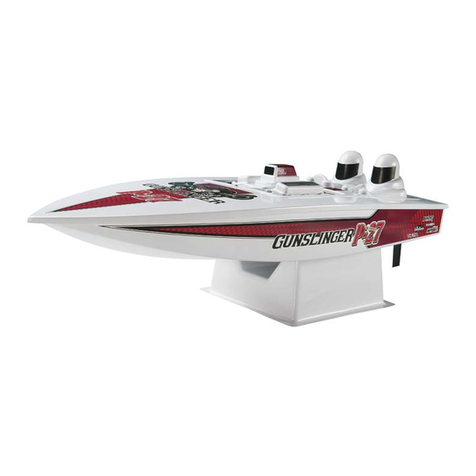
AquaCraft
AquaCraft Gunslinger P-27 instruction manual

Carl Goldberg Products
Carl Goldberg Products EXTRA 300 instruction manual
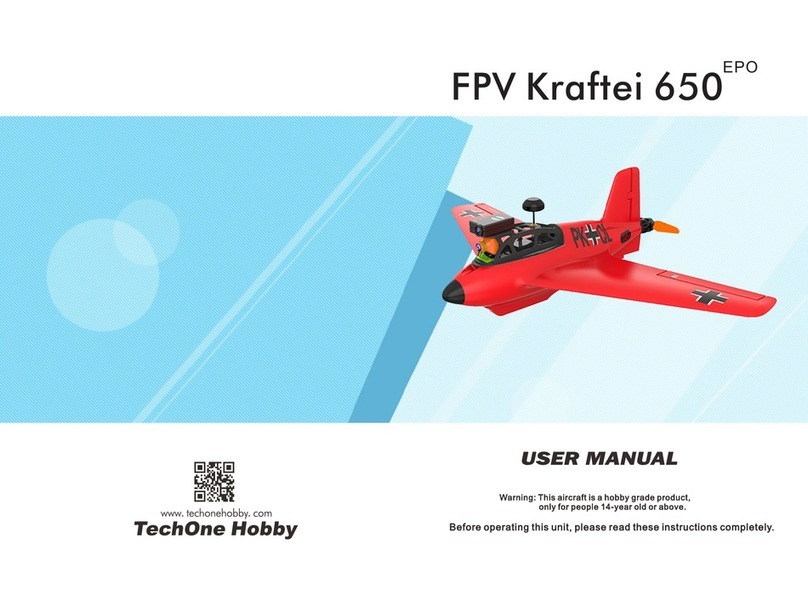
TechOne Hobby
TechOne Hobby FPV Kraftei 650 EPO user manual
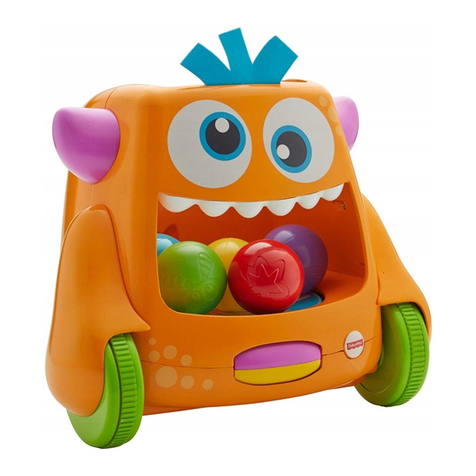
Fisher-Price
Fisher-Price DYM82 quick start guide
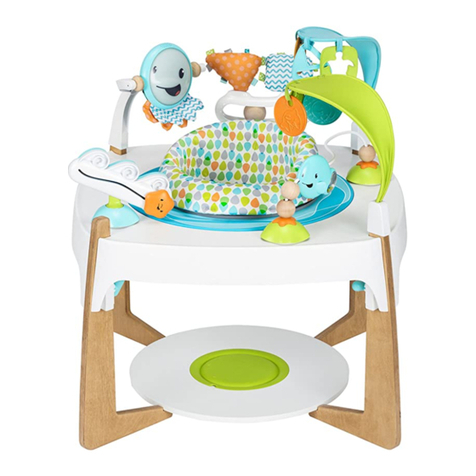
Evenflo
Evenflo ExerSaucer instructions
